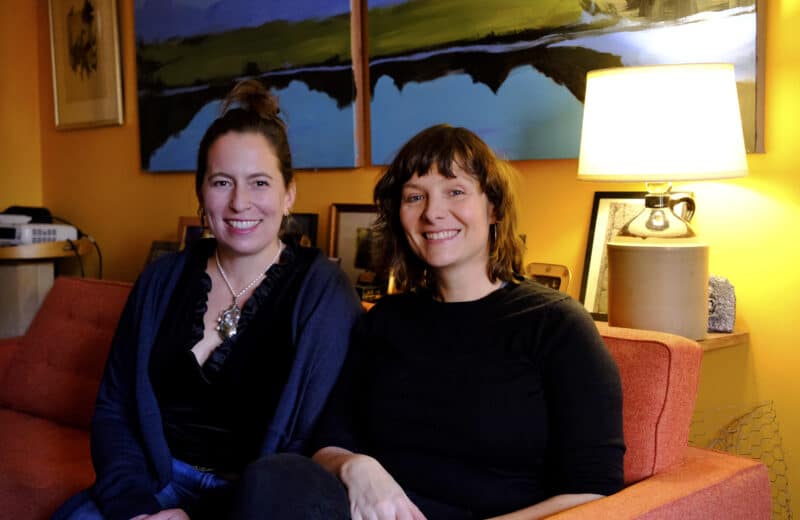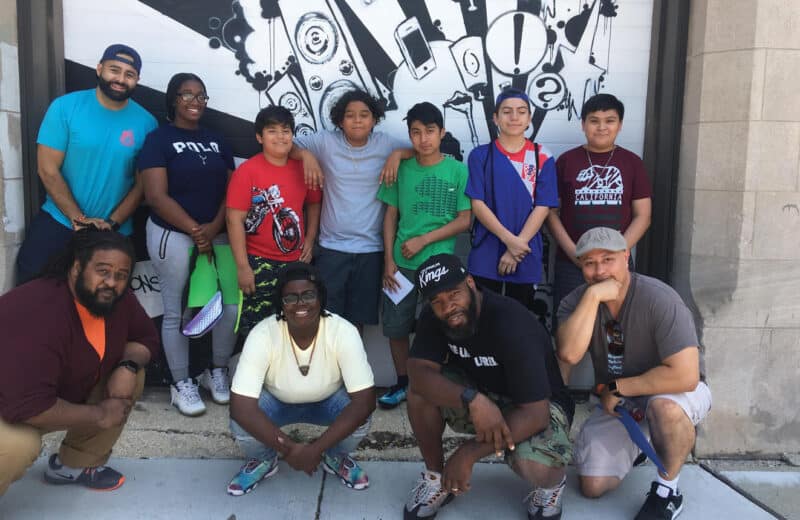Aging in a New Home
By Megy Karydes
LaManda Joy comes across a tiny wooden box in the back of a drawer and realizes it contains flowers from her parents’ wedding in June 1945. Her mother’s home is like a time capsule, she says, and moving her from it to a long-term care situation has not been easy.
Joy’s mother, bursting with vitality at age 87, could no longer maintain her own house, so Joy began the process of looking for a new, safer living situation that would still give her mother independence, a sense of community and plenty of activities.
Making the decision wasn’t easy, Joy says, because she didn’t want her mother to feel like they were putting her somewhere to just bide time until she died.
“I wanted her to have a nice, fun place where she could enjoy her remaining years with pizzazz,” Joy says. “She’s a feisty lady and has a lot of life in her, despite her physical deterioration.”
Over the course of several months, Joy traveled from Chicago to St. Helens, Oregon, specifically to help her mother move from Joy’s childhood home to an independent cottage for which she had been on a year-long wait list. “She didn’t want to live in the main building with ‘all those old people,’” laughs Joy.
For many, the idea of slowing down and living out the days in an old folks’ home isn’t part of their life plan. But understanding why a move may be necessary and what types of care and facilities are available when, and if, the time comes to make those moves, can make that pill far less bitter to swallow.
The Continuum of Care
“When we’re looking for a certain medical diagnosis that says, ‘This is when you move,’ well… you can’t really think like that. There’s no one medical diagnosis that determines anything,” says Patricia Foran, RN, vice president of clinical services with Senior Lifestyle Corporation, which manages 30 facilities in the Chicagoland area, 49 in Illinois and over 350 across the country. “It’s generally based on the physical assistance that somebody might need, or on personal safety. It’s life situations—what can you do; what can you afford; what do you need? That’s what moves you through the continuum of care.”
At The Clare, in downtown Chicago, residents find a continuum care retirement community, which includes independent living, assisted living and skilled nursing.
“About 30 percent of those…in our independent living area come as couples,” says Kyle Exline, executive director, The Clare. “They may be retired but are still very active, involved and want to continue to live in downtown Chicago. They love being in the city, so our proximity to things like the theater are important to them.”
Others come to The Clare needing assisted living services with access to nurses and certified nurse assistants (CNAs) who can assist with their healthcare needs, he adds.
The Clare’s skilled nursing services are primarily used as a short-term rehabilitation facility, “…for example, for someone who had knee replacement surgery and needs to rehabilitate with us,” Exline explains. “That stay can go up to 100 days. It just depends on each person’s needs.”
Independent Living
As we age, the opportunity to make friends decreases, as does, sadly, the number of friends we’ve held onto over the years, either by the death of those friends or by our own relocation. So when people move from their homes, according to Foran, they’re “hopefully moving to an independent living [facility].”
“Independent living is for someone who doesn’t need help with ADLs (activities of daily living), but who wants the benefits of living in a community, such as sharing meals together that they don’t have to cook, and programs like concerts, art classes, lectures, movies, discussion groups, book clubs and more.” says Polly Levinson, LSW, resident services manager at The Selfhelp Home in Chicago.
“The social aspect cannot be understated,” emphasizes Foran.
Levinson finds that independent, and even assisted living, residents at Selfhelp often feel less isolated because they’re supported, engaged and connected with others. They’re living in a community with people who have shared interests and commonalities, and for many people, that’s better than living at home alone.
“It’s just like college [dorm life],” Foran points out. You can come and go as you please, meet new people and participate in the clubs and activities or choose not to. “You can even start a new club. There’s no need to be isolated.”
Assisted Living
“Assisted living services are available for those clients who need assistance with certain activities, whether it’s showering or getting around,” says Robin Polick, healthcare marketing director with Park Place of Elmhurst. “For many, though, it’s not just about health concerns. Their socialization is important, too. It’s extending their quality of life, especially when their health falters.”
“Medication management is one of the leading [needs that cause people] to move into a more assisted and scheduled environment,” says Foran. Additionally, “A lot of the elderly that are still living on their own aren’t getting the nutrition they need.”
Residents of Park Pace of Elmhurst’s assisted living communities have their medications administered by nurses or licensed aide residents. Also, residents don’t have access to a stove, as all meals are cooked and prepared for them.
“People think of assisted living like the old nursing homes, but it’s not,” says Foran. “It’s less a medical model and more a social model. It’s a wellness model—a wellness approach.”
Memory Care
Other residents need more specific care. For those living with Alzheimer’s or another form of dementia, a memory care facility is another option.
“It’s time to consider memory care when the person is no longer safe,” Foran says. “They wander. They can’t get home. Or, it could be when someone is unable to determine what to do next. It’s when they have cognitive problems.”
Autumn Leaves operates 10 communities in the Chicago area devoted exclusively to memory care. All of the residents at Autumn Leaves are living with Alzheimer’s or another form of dementia, according to Jason O’Higgins, regional director of sales and marketing for Autumn Leaves, who explains that the buildings are built from the ground up with memory care in mind.
People living with Alzheimer’s or dementia can become agitated, confused, aggressive or depressed. Memory care facilities can provide a structure that helps minimize those symptoms.
“Our caregivers know how to communicate and to work with people with dementia,” O’Higgins says. “Plus, the resident has a chance to socialize and engage in activities here—where they may have been lonely or bored at home—and they have a routine that’s predictable and comforting.”
Choosing a Community
Worth noting: Not all senior living facilities are created equally.
When choosing a skilled nursing facility, Exline recommends that residents consider staff-to-resident ratio, outcomes, the medical director, therapy programs and dining programs.
“For many, the dining program is important,” he notes. “As residents come to the skilled nursing facility, they often need to get stronger, and their diet is an integral part of their rehabilitation. Or, they need a gluten-free diet. Each person has different priorities when looking at skilled nursing facilities, and it’s important to make sure those priorities are considered when deciding on one.”
Every home is different in terms of the levels of care it provides and its fee structure. “Different levels of care may not seem important to an independent and active senior, but understanding what’s available in different communities is important for long-term planning,” Levinson says.
At Selfhelp, the assisted living residents are not isolated into a specific part of the building or floor, as is the case with some retirement homes. “This helps maintain a certain level of dignity for the person,” Levinson says. “Just because you need a little help doesn’t mean you have to leave your independent living apartment and move to another area of the building. At Selfhelp, the assistance comes to you.”
In other communities, independent living and assisted living communities are separated, as is the case at Park Place of Elmhurst.
Respite care is an option for those families who need help for just a day or a few days. Respite care, available at Park Place and Autumn Leaves, is also a good option for those who want to try out the community before making a long-term commitment.
Whether a resident requires assistance with specific healthcare concerns or prefers a more independent lifestyle with the benefit of assistance at the ready, today’s range of care communities provides a wealth of options. And before a single box is packed, it’s a person’s life situations that determine the need for a move and not the other way around. +













